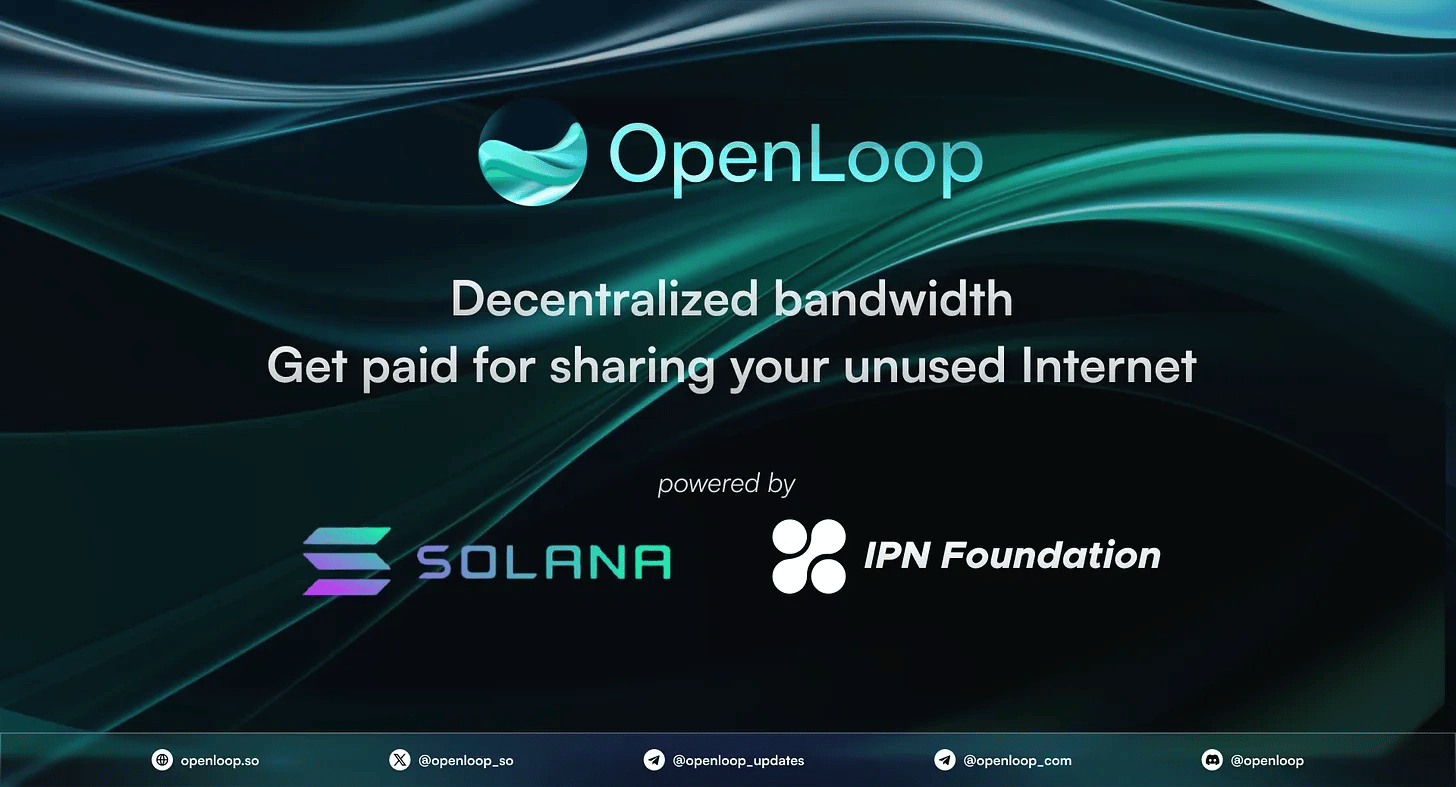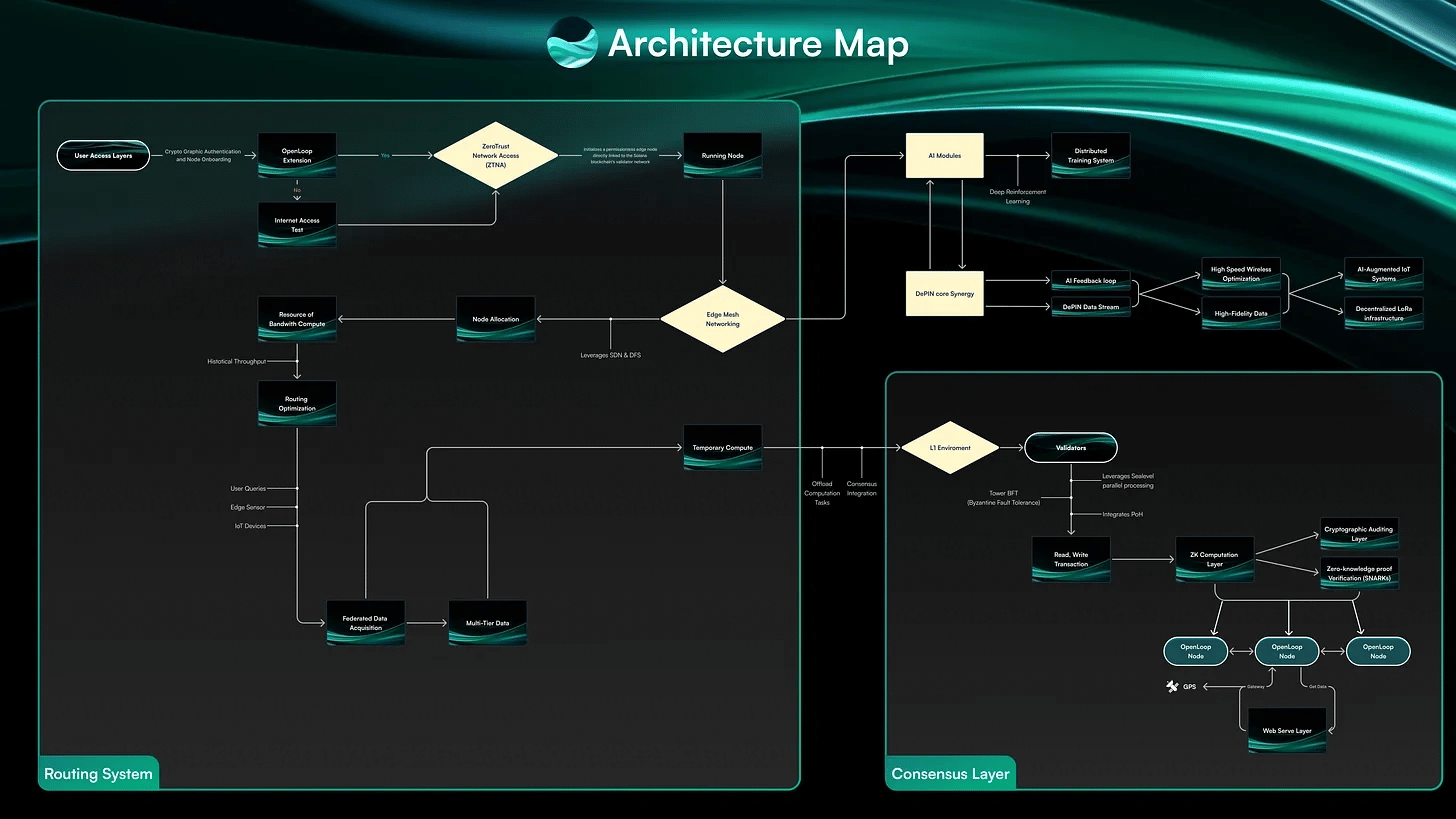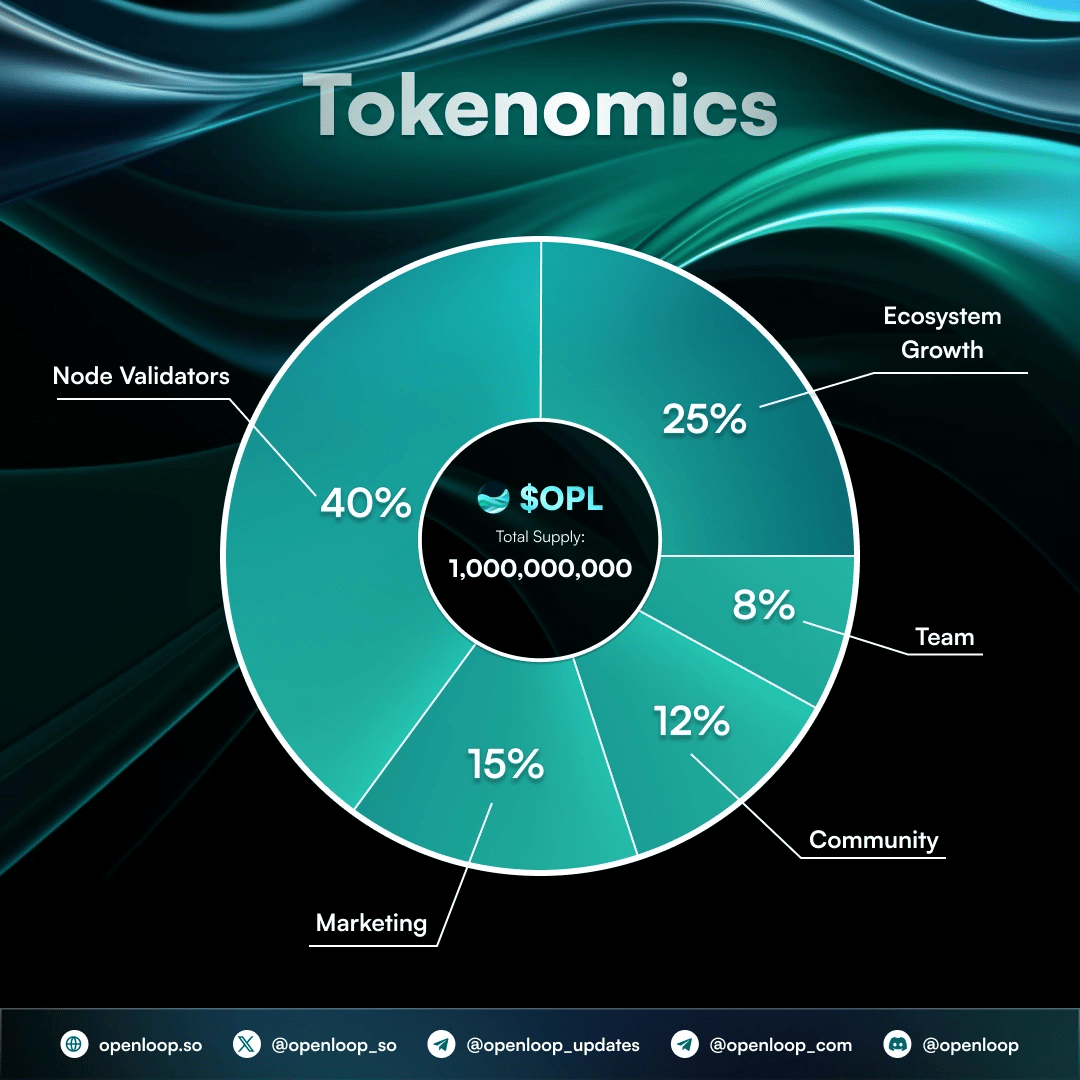위키 구독하기
Share wiki
Bookmark
OpenLoop
OpenLoop
OpenLoop는 사용하지 않는 인터넷 대역폭을 기술 혁신과 인공지능(AI)의 증가하는 수요를 지원하는 자원으로 전환하는 것을 목표로 하는 분산형 무선 네트워크입니다. [1]

개요
OpenLoop는 사용하지 않는 대역폭을 활용하여 인터넷 연결을 최적화하는 것을 목표로 하는 분산형 무선 네트워크입니다. 분산 프레임워크를 통해 사용자는 대역폭을 기여하여 AI 기반 기술과 데이터 처리를 지원할 수 있는 확장 가능하고 효율적인 네트워크 구축에 도움을 줍니다.
분산 원칙을 활용하여 OpenLoop는 자원 공유를 강화하고 기존의 중앙 집중식 네트워크와 달리 고성능 애플리케이션을 위한 안전하고 확장 가능한 연결을 가능하게 합니다. [1] [2] [3] [4]
기능
OpenLoop를 통해 사용자는 Sentry Node Extension을 통해 사용하지 않는 대역폭을 공유하여 AI 연구 및 데이터 처리 작업에 기여할 수 있습니다. 개인 정보를 보호하면서 사용자의 기여를 검증하는 Proof of Backhaul, Location 및 Frequency와 같은 메커니즘을 통해 보안을 유지하는 것을 목표로 합니다. 사용자는 대역폭 공유에 대한 보상을 받을 수 있습니다.
이 네트워크는 효율적인 노드 관리 및 높은 트랜잭션 처리량을 위해 Solana Blockchain을 활용하며, 데이터 흐름을 최적화하도록 설계된 AI 기반 에지 메시 네트워킹을 사용합니다. OpenLoop는 개인 정보 보호 및 확장성을 위해 Zero-Knowledge Proofs를 통합하여 안전한 트랜잭션과 분산 클라우드 스토리지를 지원합니다. 이 네트워크는 Byzantine Fault Tolerance를 통해 무결성을 유지하고 실시간 의사 결정을 위해 연합 데이터 수집 및 AI 향상된 IoT 시스템을 지원합니다.
2024년 12월, Openloop는 25,000개의 독점 노드를 포함한 첫 번째 노드 판매를 시작했습니다. [1] [3] [4] [5] [7]

아키텍처
OpenLoop의 아키텍처는 유휴 대역폭을 최적화하고 데이터 처리, 연결 및 AI 애플리케이션을 위한 안전하고 확장 가능한 솔루션을 제공하는 것을 목표로 합니다. 시스템의 성능과 접근성에 기여하는 5가지 주요 구성 요소로 구성됩니다. [4] [6]

분산 라우팅 계층
분산 라우팅 계층은 동적 라우팅 알고리즘을 사용하여 데이터 전송을 최적화하여 효율성과 복원력을 향상시키는 것을 목표로 합니다. 지연 시간을 최소화하고 처리량을 극대화하기 위해 실시간으로 경로를 조정합니다. 사용자 쿼리는 근접성 및 부하와 같은 요소를 기반으로 관련 노드로 전달되며, 에지 센서는 필요에 따라 성능을 모니터링하고 조정합니다. [4] [6]
합의 계층
합의 계층은 네트워크 상태를 검증하고 합의하여 트랜잭션과 계산이 정확하고 안정적인지 확인하는 것을 목표로 합니다. 변경 불가능성을 위해 블록체인 기술을 사용하여 투명성과 감사 기능을 제공합니다. 이 프로토콜은 비잔틴 장애를 허용하도록 설계되어 결함이 있는 행위자에도 불구하고 정상적인 작동을 유지합니다. 또한 네트워크가 확장됨에 따라 지연 시간을 줄이고 처리량을 개선하기 위해 확장성을 최적화합니다. [4] [6]
검증자
검증자는 OpenLoop 네트워크의 트랜잭션과 계산을 검증하여 블록체인에 추가되기 전에 정확성을 확인하는 것을 목표로 합니다. 개인 정보를 유지하기 위해 Zero-Knowledge Proofs (ZKPs)를 사용합니다. 검증자는 스테이킹을 통해 인센티브를 받으며, 부정직한 행위에 대해서는 담보가 위험에 처합니다. 검증자 네트워크의 분산 구조는 보안을 강화하고 중앙 집중식 오류의 위험을 줄이는 것을 목표로 합니다. [4] [6]
OpenLoop 노드
OpenLoop 노드는 사용하지 않는 대역폭을 활용하여 트래픽을 중계하고 데이터 스크래핑 작업을 수행하여 시스템의 분산 백본을 형성하는 것을 목표로 합니다. 노드 할당은 작업 분배를 최적화하기 위해 동적으로 관리됩니다. 운영자는 데이터 중계 및 콘텐츠 스크래핑에 대한 토큰 보상을 받아 참여를 장려하고 분산을 지원합니다. [4] [6]
AI 기반 분석 계층
OpenLoop의 AI 기반 분석 계층은 머신 러닝(ML)과 인공지능(AI)을 사용하여 실시간 데이터를 처리하여 네트워크 동작을 최적화하고 시스템 성능을 향상시킵니다. 자원 할당을 개선하고 네트워크 상태를 예측하는 것을 목표로 합니다.
AI 모델 교육은 분산 네트워크의 다양한 데이터 세트를 사용하며 강화 학습 및 비지도 학습과 같은 방법을 사용합니다. 이러한 모델은 자연어 처리, 컴퓨터 비전 및 예측 분석과 같은 분야를 지원하는 AI 기술 발전에 기여하는 것을 목표로 합니다. [4] [6]
토큰 경제
OpenLoop 토큰 ($OPEN)
$OPEN은 OpenLoop 네트워크의 기본 토큰입니다. 인터넷 대역폭 공유에 대한 보상으로 사용되며 네트워크의 분산 성장에 기여합니다. [3] [8]
할당
$OPL 토큰의 총 공급량은 1,000,000,000개입니다. 할당은 다음과 같이 구성됩니다.
자금 조달
OpenLoop는 IPN Foundation이 주도하는 라운드에서 1,500만 달러의 자금을 확보했습니다. 이 재단은 AI와 분산 기술 발전에 중점을 둔 이니셔티브를 지원하며 데이터 소유권과 분산 연결을 강조하는 네트워크를 육성하는 것을 목표로 합니다. [9]
잘못된 내용이 있나요?

